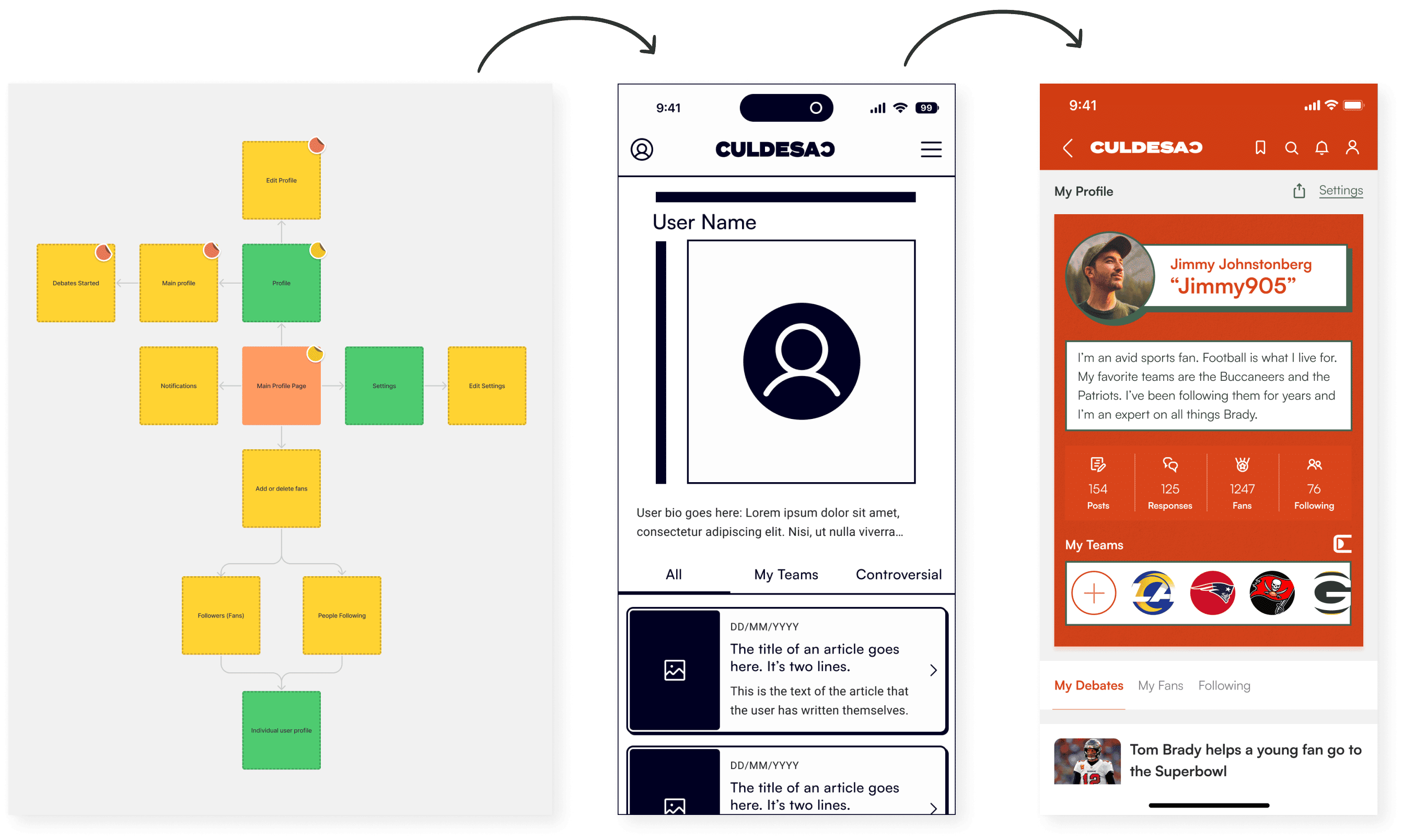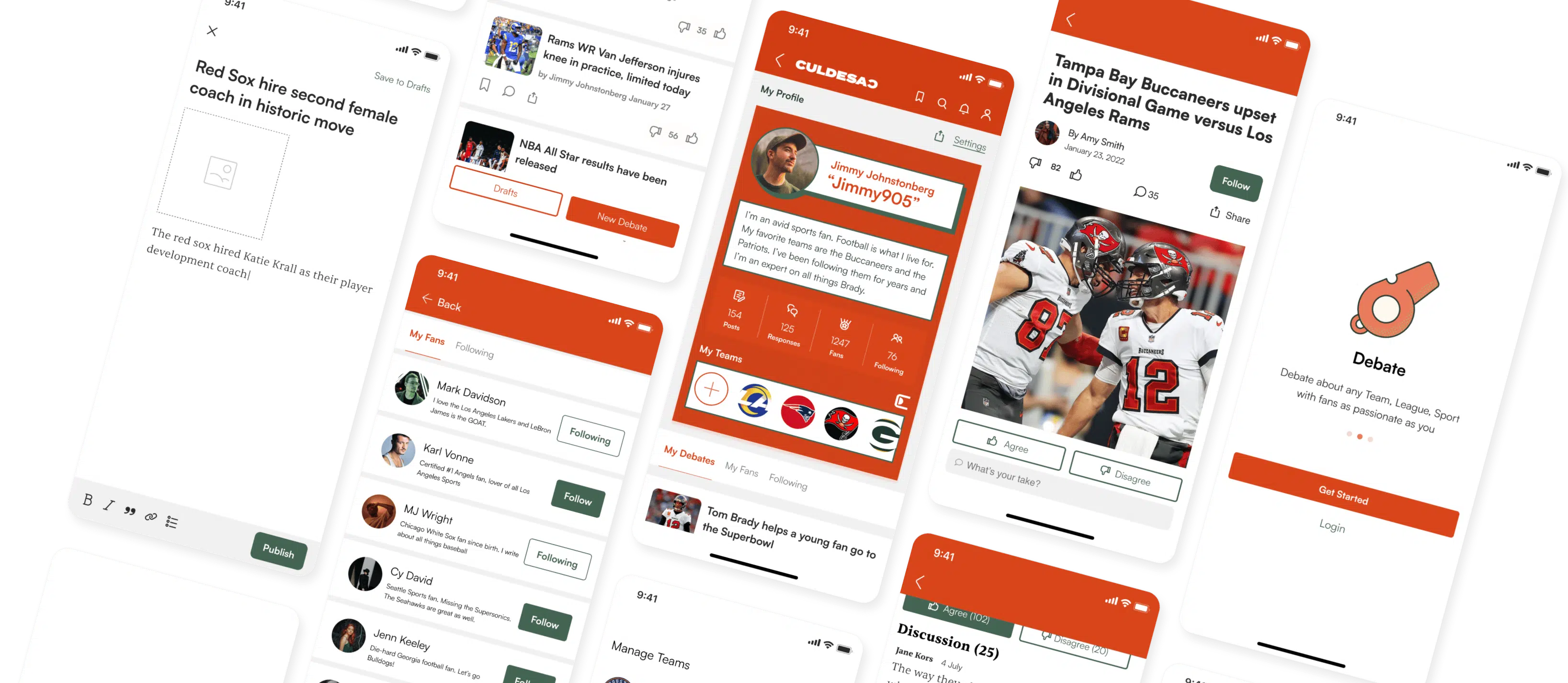
Making online sports debates interactive and fun again
Platforms
iOS and Android
Deliverables
Discovery, Product Strategy,
UI, UX, Development

Sports commentary in the hands of fans
Culdesac aims to put the power back in the hands of sports fans so that they can debate and write about their perspectives on the world of professional sports. Our goal was to create a platform for sports fans to congregate and produce quality journalistic content about their favorite athletes, teams, and games—in an unfiltered, long-form, and article-based medium.
With Culdesac, we transformed the online conversation around sports so that it wasn’t just in the hands of a TV announcer, but felt more like a casual bar conversation with friends.

Redesigning for execution and development
When the Culdesac team came to us, they had already been through the design process with another app development house, but they didn’t like the design the agency produced. We inherited all their files, which included all the artifacts from their discovery (surveys, competitive analysis, personas, information architecture, and pitch deck) as well as relevant design files (UI exploration, style guide, logos, and high fidelity prototype.)
We started by reviewing all of the existing materials to accelerate our discovery. This way we wouldn’t repeat the same mistakes of the previous development team and would avoid covering the same ground.
We created a project brief, which would act as an established guide to align the team and act as our reference point along the design process. Our project brief would ensure that we were meeting our requirements and staying true to the project goals.

Discovery to uncover errors in previous design
One of the first decisions we made was to pare down the feature set to create an MVP that was realistic for a first launch. To decide on our feature set, we conducted a features workshop. We decided to rank the features by their value-add to the user and kept only those of high value
The next step was a heuristic evaluation, an audit of the existing high fidelity prototype, and a competitive analysis. The results of our heuristic evaluation showed that the app lacked organization and hierarchy. When we conducted an audit of the prototype, combed through the app design thoroughly, and called out each instance of a poor design decision.
In our competitive analysis, we avoided the sports apps that were covered in the first competitive analysis. Instead, we looked at Culdesac’s value proposition to identify apps that were doing similar things in other spaces. To that end, we focused on written content creation apps like Substack, Medium, Reddit, and Quora. We looked at how each app allows users to publish articles, how the comment sections look, how articles can be found, and how profile sections look if available.

Recreating the MVP
The next step was designing the MVP. We started by creating a site map to outline all of the screens and functions we would need. For our UI exploration, we were limited to the brand colors chosen by our client in their first round of design, so the goal was to use those themes to inform our proposed layouts.
Design is an iterative and collaborative process for us, so we consulted the client on each step, gathering feedback, answering questions and concerns, and making revisions to the project according to their directions. We also conducted internal critiques and several collaborative working sessions to overcome some of the challenges of designing the wireframe—such as making sure we had all of the right screens and executing some special requests the client had for the profile page design.

Building client trust and rapport
Something we did early on was establishing a culture of open communication and collaboration. Our clients had already been through the design process once and were likely to be a drained and skeptical. We encouraged them to be as open as possible with us and express any reservations early. We also worked to make the process as smooth as possible, by listening carefully to what they asked and keeping them in the loop at every step. We made sure they were heard and reflected their inputs in our deliverables so that they didn’t have to repeat themselves or experience the frustration of not getting a viable product again.
